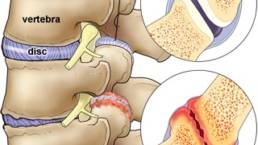How Physiotherapists address Cervicogenic Headaches
Headaches can be mild, moderate and severe, and these painful occurrences come in several forms. Some types of headaches originate in the soft tissues of the neck region but the actual pain is felt in the head hence the term headache.
This kind of headache is called a cervicogenic headache and can often be helped with manual manipulation of the original site of the discomfort by a highly trained physiotherapist.
Understanding the Three Main Types of Headaches & Their Differences
Not all headaches are the same. In reality, there are three different types of headaches and each is different than the others.
The 3 types of headaches include:
- Migraines
- Tension or Stress Headaches
- Cervicogenic Headaches
Of these three main types of headaches, doctors have determined that the vast majority, up to 80% to 90%, can be classified as tension headaches.
Migraines are far less common, and this headache often includes more serious symptoms including nausea, vomiting, dizziness and extreme sensitivity to either or both sound and light. Migraines often result in visual changes as well.
Cervicogenic headaches are thought to impact 14% to 18% of the general population, and the pain is typically one-sided or hemi-cranial pain that may be chronic. In this headache type, pain is referred to one side of the head from the cervical spine or in the soft and sensitive tissues deep within the neck area.
Symptoms of Cervicogenic Headaches to Watch Out For
Cervicogenic headaches have some specific symptoms that helps confirm a diagnosis when they are present. Again, this is referred pain meaning that the source of the pain is likely in the cervical spine and/or back of neck region.
Common symptoms to look for include:
- Localized pain back of head/neck or temporal region – one-sided
- Trigger points in neck muscles increase pain when targeted
- Increased neck tenseness becoming tight
- Pain that increases during neck motions
There may be evidence of a lesion or disorder within the cervical spine or within the neck muscles and nearby soft tissue to diagnose cervicogenic headaches. Evidence may include tumors, infections or rheumatoid arthritis affecting the upper portions of the cervical spine among others.
Procedures That Physiotherapists Can Do That May Lesson Pain
A highly-trained physiotherapist can target the source of the pain with gentle massage and manipulation of the tense and “locked” soft tissues of the neck.
Other therapies for cervicogenic headaches include:
- Gentle manipulation/mobilizations of stiff cervical joint
- Targeted neck area massage
- Neck muscle strengthening exercises
- Postural corrections
- Acupuncture or Dry Needling
- Pain management
Holistic Chiropractic & Physiotherapist Cervicogenic Therapy
Along with the above pain control and symptom reduction measures, the use of supportive pillows and positioning aids may be recommended to support the neck and correct alignment from neck to spine base.
For more information about how Physiotherapists address Cervicogenic Headaches, contact Perth Wellness or call (08) 9321 1964.
Related Posts
What is Facet Syndrome?
27 April 2018
Facet joints are the joints between two vertebrae in your spine that allow and support movement such as bending and twisting. These joints can become inflamed resulting in restricted movement, pain and stiffness. Pain stemming from these joints is commonly referred to as Facet joint syndrome.
0 Comments3 Minutes
카이로프랙틱이란 무엇인가요 (What is Chiropractic)
13 November 2020
카이로프랙터로 일하는 동안 카이로프랙틱에 대해 잘 알지못하고 방문하시는 분들을 종종 마주칩니다. 그 예로 단순 마사지를 요구하시는 분부터 주사와같은 시술을 문의하시는 분, 물리치료를 받으러 오셨다는 분들이 계십니다. 그래서 카이로프랙틱이란 무엇인가에대한 올바른 정보와 저희 클리닉에 방문하시면 어떤 도움을 받으실 수 있는지 알려 드리고자……
0 Comments3 Minutes


